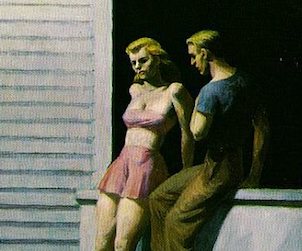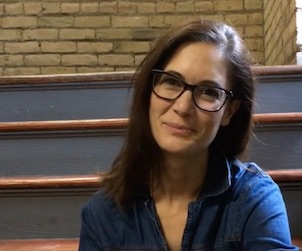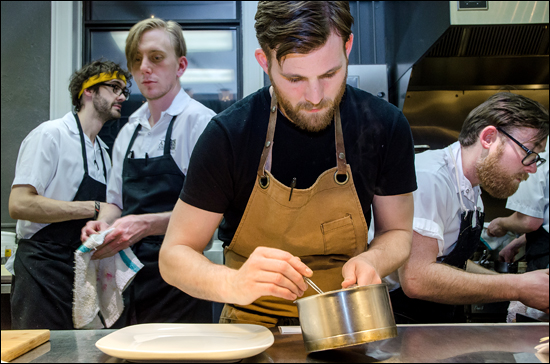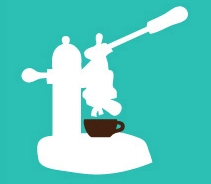Lorette C. Luzajic returns with a Summer edition of her series Wine and Art.
“And so with the sunshine and the great bursts of leaves growing on the trees, just as things grow in fast movies, I had that familiar conviction that life was beginning over again with the summer.”
In The Great Gatsby, F. Scott Fitzgerald captures summer’s promise and potential. Never mind what calamity lurks around the corner, or the unsavoury repercussions of excess in eternal summer, and never mind the pending drudgery of narrowing daylight soon to follow. Summer summarizes all the best in life, however fleeting.
One painting that epitomizes that feeling is John William Waterhouse’s Sweet Summer. Arguably, all of Waterhouse’s paintings are about summer; the most important pre-Raphaelite’s canvases overflowed with sun-dappled maidens and warm breezes, nymphs and mermaids among scattered waterlilies and blossoms. Never mind the classical myths that narrated his imagery – all of these damsels and their treasure chests and tinctures and looms were in fact, the spirits of summer.
This particular painting captures the sultry lollitude of twilight July’s lawns and fountains. When was the last time you laid down in the grass and looked up at the sky?
The only thing missing for this reclining, milky, bare-breasted, blossom-fondling summer siren is a glass of Cloudy Bay Sauvignon Blanc. It’s one of the wines that put New Zealand on the global grape map. If the price point is a little over and above my everyday, it’s still a bargain if you’ve got 36 bucks burning a hole in your pocket. This wine is a veritable fountain of grass. It’s one cascading mowing or mining flavour after another – fresh sliced asparagus, lawnmower fuel, tall grass, well water, granite, sage, tobacco. The trend might be to lightly de-refrigerate fancy whites for a fuller flavour, but I stand starkly against that in this particular instance: this wine tastes even more expansive – and expensive – when it’s ice cold.
The Academy and all its immaculately painted folds of cloth and dapples of light can grow tiresome to even its most ardent admirers like myself. Many art aficionados choose teams between representation and abstraction in art, but I always encourage people not to. There is a wealth of splendour in the skill and story of even the most saccharinely rendered representational art, and the sometimes-simplicity of abstract art can teach us a million things about colour, composition, and raw emotion. When the dew and roses idealism of academic painting all start to look one like another, veer off course with something more modern and abstract.

Richard Diebenkorn’s most famous or popular body of work, the Ocean Park series, reveals how impressionable our minds are to simple suggestion. Some 140 colour block compositions in the series, we perceive them as exactly what they claim to be in titles: Ocean Park 1, Ocean Park 49, Ocean Park 88. Teal and aqua and yellow swathes of paint nestle gently against the shores of smudged lines of architecture, and voila! we have Santa Monica’s ocean front and urban shoreline clear as a summer day in every one.
If you approached Diebenkorn’s works without titles or backdrop in tact, you might guess they are California beach paintings, but they could equally be game boards, dance step legends, or aerial views of Flemish farms. Once Venice Beach comes to mind, however, you are transported there, even if you’ve never been. In his seminal book, Shock of the New, Robert Hughes praised the works as, “surely one of the most distinguished meditations on landscape in painting since Monet’s waterlilies.”
If I look at these beautiful homages to eternal summer and look for wine instead of the sea, one California white that comes to mind is the McManis family’s Chardonnay. I’m usually in the California aisle for their Cab Sauv, which has that taste of toast and muffins on the tongue, the one that shows up in Apothic and Cupcake Red Velvet. But their Chardonnay is a nice reprieve of cool breezes in August and holding it in my hand in a stemless glass makes me feel like I’m on a coast.
I love Chardonnay for its unapologetic largesse, its confidence, even its abrasive qualities. Chardonnay never tries to be all things for all people, and I respect that. This one is a real party pleaser though, mild mannered, sensual, and playful, with an easy acidity and airy weightlessness. You float through it, on your back, toes in the waves.
The Wine Curmudgeon liked it too: “…No dirty flavours covered up with sweetness, and it still tastes like wine, with acidity and freshness…the fake oak is excellently done, with a taste of oak and not a bucket of it.”
He goes on to state, “The McManis Chardonnay demonstrates why the California producer makes some of the best $10 wine in the U.S.”
Well, in Canada we pay $20 and it’s a steal.

Edward Hopper is an entirely different coast – literally, and in terms of his art. Hopper was a prolific realist who froze moments of New England summers into countless vignettes of cinemas, gas stations, and quiet clapboard lake front properties and engraved them on our psyches.
His art has long entered our archetypal imagination, even if the figures are generic everymen or nobodies. The girl in the cloche sipping coffee under a dingy sign that reads Chop Suey; the awkward boy-men in white t-shirts and khakis, floundering for something engaging to talk about with their distracted dates.
Hopper’s work, however evocative, could be perceived as technically ordinary when compared to some of his peers, or to the brilliant contemporary draftsmen of our day. Today, our voracious appetite for heavy stimulation and drama might not grasp the genius in his half-hearted brushstrokes and quiet illustrations. Hopper’s success or trick was that his realism cut much deeper than drawing. He painted the same folks, the same old big and empty houses, the same lawns and roads and the same ending to summer, the same average office women reading letters or looking out of windows of trains, over and over. Other artists rendered detail more precisely, and many more were better attuned to nuance and poetry than this oversize, taciturn, painter. But Hopper’s very disconnect or detachment is how he got everything so right. Standing just off to the side, he paints as if he is peering in a window at unsuspecting inhabitants. Who else could have so accurately rendered the heady malaise of heat-struck August and its attendant parallel in the American psyche?
I have limited experience with drinking Vermont vino, but Hopper’s art really does require a moody glass of east coast orchards for contemplation. I had to use a little imagination and a selection from Ontario just to be on the same shore. His body of work is an essential marker of New England Americana, but our terroir is a lot closer than Chile’s or Italy’s, and we have the same apples and peaches bursting between vineyards. Creekside’s Sauvignon Blanc is a nice pick, cool but ripe with green apples. Thirty Bench’s Riesling is a sweet and spicy mouthful of peaches, and just as perfect for listening to crickets on the back steps.
Now this is my childhood home, and I love these orchards and the sun spilling into the creek as it goes to sleep behind them. I love the ocean, too, and the sprawling farmlands, the woods – but summer in the city is, for me, the pinnacle of everything.
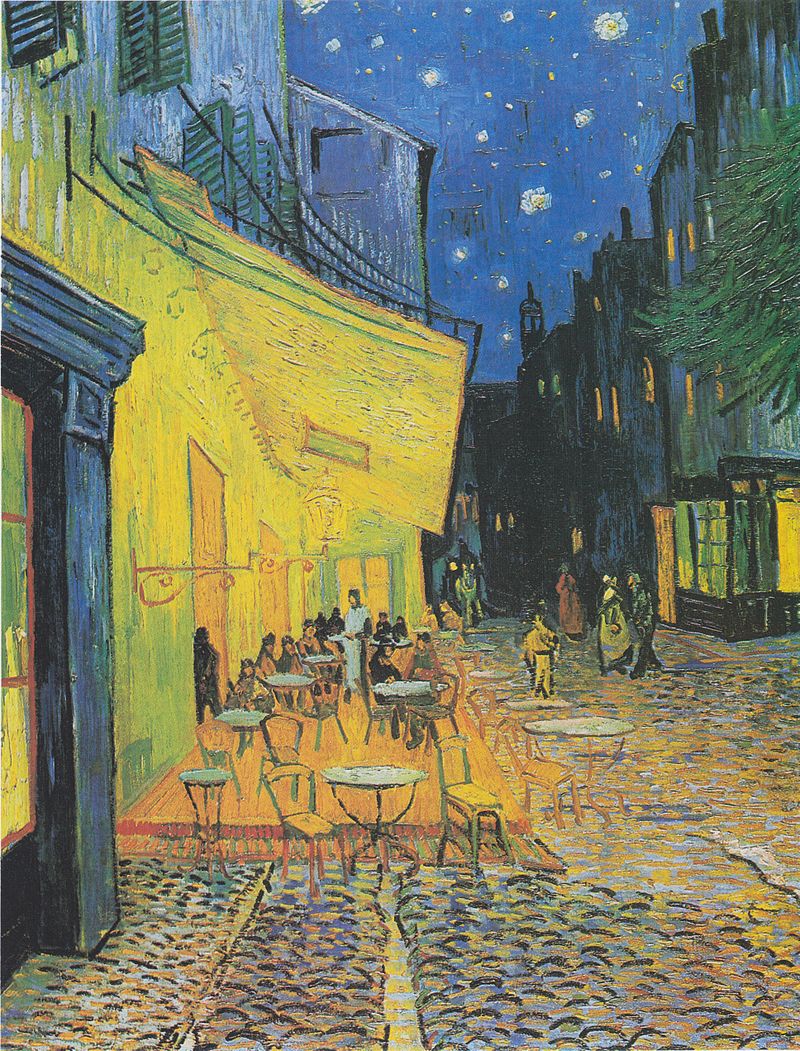
What could top a sultry summer night right here at home, spent listening to the symphony and walking through the Casa Loma gardens, with wine glass in hand? A warm night in any city, after gallery hopping, practically demands a street-side patio where one can enjoy a cafe’s finest beverages and listen to the world go by. If ever there is an iconic painting of a summer city night, it’s Vincent Van Gogh’s Cafe Terrace at Night.
Van Gogh’s Cafe Terrace was a celebration of his discovery that painting en plein air after sundown was magical. Those who read the painter’s letters and diaries know that Van Gogh lived, breathed, and bled in magnified colour. Besides poor people, the plight of prostitutes, and his gratitude to his brother who supported him, it’s all Van Gogh thought about. With this, his first painting of a starry sky, he discovered how vivid a palette could be conjured by seeing in the dark. “It’s quite true that I may take a blue for a green in the dark, a blue lilac for a pink lilac, since you can’t make out the nature of the tone clearly,” he wrote to his sister while working on this painting.
“A huge yellow lantern lights the terrace, the façade, the pavement, and even projects light over the cobblestones of the street, which takes on a violet-pink tinge. The gables of the houses on a street that leads away under the blue sky studded with stars are dark blue or violet, with a green tree. Now there’s a painting of night without black. With nothing but beautiful blue, violet and green, and in these surroundings the lighted square is coloured pale sulphur, lemon green.”
Van Gogh’s enchantment with the patios of Arles, France, focuses on shades of blue and orange, but the painting somehow transports the viewer to the sidewalk cafes of the world through sight, sound, memory. One of the great strengths of Van Gogh’s work that set him far apart from other Impressionists and made him distinctively enduring, in my view, is that his paintings were devoid of cheap, excessive sentimentality. They were atmospheric and beautiful, but never gave off cheap fumes or easy emotions. You can feel the weight of place, and smell espresso and summer in the air without a hint of the mawkish. You can hear Billie Holiday singing “Summertime” a half century before she recorded it.
And what to sip during this summery transcendence of time and space, while sitting on Van Gogh’s patio-terrace? The French region of Provence where Van Gogh painted this cafe is famous for the gold standard of rose, which is known in some circles as “l’eau d’ete”- summer water.
Provence pink is plush and stylish, Impressionism without saccharin.
Enjoy a bottle of Chateau De Saint Martin No 2 2016, with its delicate whiff of grapefruit and dusting of ripe strawberries. It’s a mouthful blend of Tibouren, Grenache, Cinsault, Syrah and Carignan pulled off with understated panache. You might also enjoy Francois Dulac Cotes De Provence, too, one sip of which will bring to mind that song you forgot about, “I Touch Roses.”
Tonight, on the turn of months to the centre of the season, I simmer in cool grapes and try to summon the soul of summer and what my memories are made of.
Amazing what half a bottle, an ink pen and a blank page can conjure. My notes: Boys of Summer, Don Henley; Jean Nate after-shower splash, out of the refrigerator; Gales Gas Bar, scent of adolescence; pizza and white wine on sidewalk patios in Rome; pizza and red wine on sidewalk patios in Rome; pink wine and oranges and sunset beach walks in Tunisia; perched at the intersection of the Rio Cuale and the ocean in Puerto Vallarta, Mexico, singing Love Boat with my bestie after vino rojo and tequila in the same glass; trying to work “plein air” like Monet and Van Gogh, and finding it’s nicer taking notes and dreaming, because all the papers I need for collage and glue just get humid or else fly away; and Dad chilling white in Lake Huron from Manitoulin while we fry fish on on open fire, just the two of us.
Summertime, and the livin’ is easy…Life is beautiful.
Lorette C. Luzajic
Check out 150 original square foot sized paintings by Lorette C. Luzajic at squarefootartbylorette.ca.

